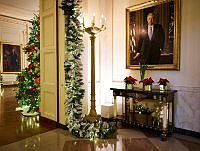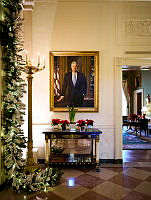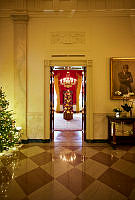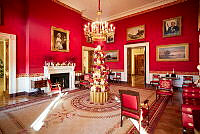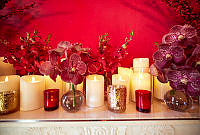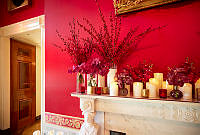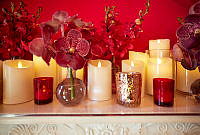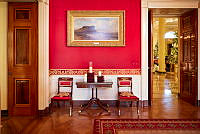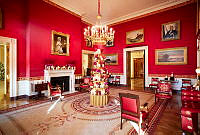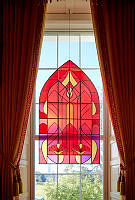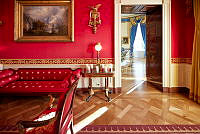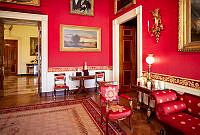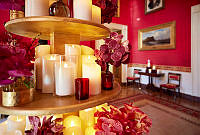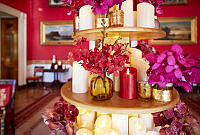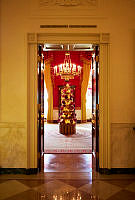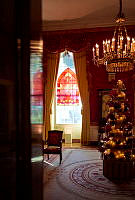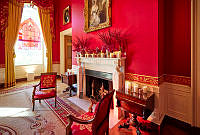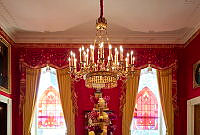Secret Spaces at the White House?
Copyright © Summer 2011 White House Historical Association. All rights reserved under international copyright conventions. No part of this article may be reproduced or utilized in any form or by any means, electronic or mechanical, including photocopying, recording, or by any information storage and retrieval system, without permission in writing from the publisher. Requests for reprint permissions should be addressed to books@whha.org
Historian William Seale introduces White House History 29: Special Spaces.
White House Historical AssociationAn Alexandre Dumas, père, would have a field day envisioning a romantic White House: passages behind the walls, portraits with peepholes for eyes unseen, alcoves covered by tapestries. If he were to see the house firsthand and to tour its 132 rooms, under- and aboveground, he would find his visions had no basis in fact—not that small truth ever made him hesitate. Visitors ask where the “secret passages” are, the “tunnels” that connect the White House to the Capitol. The White House is more open and uncomplicated in plan and layout than nearly anyone might believe possible, given the fast, high level of life as lived there and the necessity of organizational genius to assure protection of the occupants. It would be a more convenient “palace” if, like most palaces, it did present a plan more complex, more suited to the hive of activity it is. Palaces are designed to discourage entry by strangers. Palaces are worlds unto themselves, but if close, even that is not entirely analogous to the White House.
The White House design, although patterned externally on an eighteenth-century stately home in Ireland, had a simple plan from the start. Leinster House in Dublin still stands. Its three stories have small staircases built into the walls, private passages and enough architectural skullduggery to please a novelist. These, however, President George Washington’s architect James Hoban, who knew Leinster House firsthand, did not transpose to the new President’s House in Washington. He captured the idea of a stately home, moving some rooms around and creating, apparently for President Washington, the oval room we call the Blue Room. The small hallways and concealed staircases, however, were dropped, as were the small anterooms and other second-ary spaces in the plan suited to the domestic life of an Anglo-Irish peer.
George Washington’s White House presented, and still presents, an open plan. The Entrance Hall on the north is broad and gives on the Cross or Transverse Hall, into which the ceremonial East Room opens at one end, the State Dining Room at the other, and a row of three parlors in between. A stranger would not be lost in this configuration, quite unlike the arrangement at Leinster House, which is more numerous in rooms, less open in plan. But the typical American house plan was simple, even big houses, with central halls flanked by rooms. Mount Vernon is a little more complicated than that, being much added to after its origin as a story and a half cottage. Yet Mount Vernon’s banquet hall is not unlike the East Room, nor is the great end room at Leinster House.
The rest of the original White House was simply conceived, the basement and the “chamber story,” or Second Floor, consisting of long transverse corridors with the rooms opening to the sides. Three stairs linked the floors, but only one connected all three and that was a back stair in an alcove off the transverse halls, and it ran from the basement to the attic. That alcove was as close as the original White House came to a secret passage. The stair most used by the household, and made famous by Abraham Lincoln, this back stair was hardly secret. When the elevator was installed in 1881, the Second Floor and attic portions of this stair were removed.
Over time modifications were made to the White House plan. Yet nothing that might be considered “secret” resulted. When Theodore Roosevelt modernized the White House in 1902, polishing up the historical image while making the interior more compatible to ceremonial and private life, the corner room on the north- west was subdivided horizontally to provide a mezzanine level that doubled the space for domestic services. A second mezzanine was added on the east, going below the basement, when President Harry S. Truman remodeled the house in 1948–52.
The only “secret passage” that might qualify as such was built immediately after Pearl Harbor, in December 1941. The Civil Defense had begged President Franklin D. Roosevelt to move elsewhere than the White House, which it pronounced a firetrap. The president declined, but justified his longtime plan for extending the East Wing by adding a bomb shelter and ordered work to begin. No public acknowledgment was made of there being a bomb shelter under construction, only the East Wing, which Roosevelt had long cherished as a museum of the White House (just as he would a few years later envision the Pentagon as an archive of the war, after the war was over).
While the new East Wing extension was being built behind high wood fences, a temporary shelter was established at the urging of Civil Defense. The vaulted basement of the Treasury Building next door on the east was incorporated into a plan that was accessed rather awkwardly from the East Wing of the White House via a small tunnel, newly dug out, that led to the open areaway that surrounds part of the Treasury Building like a moat. Beneath a covering more like an awning, those fleeing the White House were to descend the stairs in the temporary entrance, cross the areaway, and at last enter the Treasury basement. This entire arrangement was abandoned early in the war when other facilities were incorporated into the East Wing extension.
The bomb shelter was inspected by FDR only once. Neither the grim concrete walls, nor the descent of concrete stairs, nor the small tomb-like central room reserved for the president recommended to him a return visit. An inspection of the bomb shelter became a first-day custom for all incoming presidents who followed, until the last twenty years, when the relevance of the shelter was lessened.
The 1870s State, War and Navy Building next door was pressed into White House use in small ways even before completion of the West Wing in 1902 and removal of the office functions from the Second Floor family quarters of the White House proper. By the time of World War I, however, various members of the presidential staff had offices there, and today the entire building is part of the executive complex. At various times the convenience of a tunnel between the West Wing and this building was considered; plans were drawn as recently as the 1970s. No tunnel has been built, although a large underground extension of the executive offices has been envisioned and long discussed, to be constructed beneath the Ellipse.
Not to entirely douse warm interests in secret places at the White House, there was once a “tunnel” that could be considered “secret,” although it was not a very desirable place to visit. This was a conduit built to carry water from the concealed gutters on the roof away from the house and was subsequently incorporated into Thomas Jefferson’s water closets in 1801. Water and waste were simply flushed from the house, through the tunnel, out in the open on the marsh that began on down the slope south of the house. James Hoban made a careful elevation showing a neat, arched interior with plastered walls, and a deep bed of gravel and sand for the floor. More advanced plumbing replaced the tunnel in the 1850s.
The need to expand the White House began early. Jefferson’s original wings or terraces were meant to organize and conceal the household “offices” or work spaces behind rain-sheltering colonnades. Andrew Jackson enjoyed a heated shower bath in the East Wing. What we know as the West Wing was originally a laundry and stables, among other services. Already in the 1840s some burrowing had begun into the walls of the deep areaway on the north that gives light to the basement, forming a sort of moat on that side. Today a whole complex of underground rooms stretches out from that areaway, containing the florist shop, bowling alley, and many other functions. None of it is secret.





